01.02.2024
INFORMATION AND PUBLIC RELATIONS DEPARTMENT OF THE KURSK NPP
Power unit No. 2 of the Kursk NPP was taken out of power generation mode after 45 years of successful operation
On January 31, 2024 at 04:01 Moscow time, power unit No. 2 of the Kursk NPP with the RBMK-1000 reactor was scheduled to be shut down due to the end of its service life. The reactor was shut down in accordance with the technological regulations without any comments, the power unit was taken out of power generation mode and disconnected from the Unified Energy System of Russia.
Let us recall that in accordance with the requirements of federal standards and regulations, a shutdown power unit is considered to be “in operation without generation” until the nuclear fuel is completely removed.
“During the period of operation in generation mode, the second power unit generated more than 256 billion kWh of electricity. This volume is sufficient to ensure the current level of electricity consumption for 4.3 million Russian residents over the entire 45-year operating life of the power unit. As in the case of power unit No. 1, which was shut down in December 2021, normal operations will be carried out at the second unit in the future, which, in fact, are practically no different from regular scheduled shutdowns,” said Alexander Shutikov, General Director of Rosenergoatom.
He also noted that at the Kursk NPP, as at the Leningrad NPP in its time, a change in generations of power units is being implemented. By the end of this year, the physical launch of the new innovative power unit No. 1 of Kursk NPP-2 with the PWR-TOI reactor is planned. Thus, the replacement of retired capacity will be invisible to electricity consumers.
The design life of the RBMK-1000 reactors operating at the Kursk NPP was initially 30 years, but after deep technical modernization, the service life of each of the four units was extended by another 15 years.
Over the past 15 years, during which power unit No. 2 operated during the additional period of operation, it generated almost 95 billion kWh (37% of output over 45 years).
The capacities of power units No. 1 and No. 2 of the Kursk NPP, taken out of operation with generation, will be replaced by two power units of the Kursk NPP-2 replacement station. New units are being built according to a modern NPP design of domestic design, created by Russian designers based on the technical solutions of the NPP design with PWR-1200.
The power units under construction with the PWR-TOI reactor (standard optimized informatized water-water power reactor) are the most powerful power units in the Russian nuclear energy industry and have improved technical and economic indicators.
For reference:
The Kursk NPP (Kurchatov, Kursk region) is one of the largest generating sources of electricity in the Central Russian Black Earth Region. The consumers of its electricity are 19 regions of the Center of Russia. The station includes three power units with channel reactors with a total capacity of 3 million kW. Power unit No. 1, after 45 years of service, has been in operating mode without generation since December 2021. The station's power units were connected to the country's unified energy system in 1976, 1979, 1983 and 1985. In 1994-2009, all operating power units underwent deep technical modernization. Over the years of operation, the Kursk nuclear power plant has generated over 1 trillion kWh of electricity.
Power units No. 1 and No. 2 of the KuNPP-2 of generation “3+” are pilot ones, being built according to the PWR-TOI project (standard optimized informatized pressurized water power reactor). The capacity of each power unit increased to 1255 MW, which is 25.5% more than the power units of the existing Kursk NPP.
The President and Government of the Russian Federation are expanding the range of measures to support domestic industry. The implementation of major projects, including in the energy sector, is accelerating. The Russian fuel and energy complex continues the planned renewal of capacities. This work is performed taking into account modern trends in digitalization and substitution of imported equipment. Rosatom and its enterprises take an active part in this work.
Let us recall that in accordance with the requirements of federal standards and regulations, a shutdown power unit is considered to be “in operation without generation” until the nuclear fuel is completely removed.
“During the period of operation in generation mode, the second power unit generated more than 256 billion kWh of electricity. This volume is sufficient to ensure the current level of electricity consumption for 4.3 million Russian residents over the entire 45-year operating life of the power unit. As in the case of power unit No. 1, which was shut down in December 2021, normal operations will be carried out at the second unit in the future, which, in fact, are practically no different from regular scheduled shutdowns,” said Alexander Shutikov, General Director of Rosenergoatom.
He also noted that at the Kursk NPP, as at the Leningrad NPP in its time, a change in generations of power units is being implemented. By the end of this year, the physical launch of the new innovative power unit No. 1 of Kursk NPP-2 with the PWR-TOI reactor is planned. Thus, the replacement of retired capacity will be invisible to electricity consumers.
The design life of the RBMK-1000 reactors operating at the Kursk NPP was initially 30 years, but after deep technical modernization, the service life of each of the four units was extended by another 15 years.
Over the past 15 years, during which power unit No. 2 operated during the additional period of operation, it generated almost 95 billion kWh (37% of output over 45 years).
The capacities of power units No. 1 and No. 2 of the Kursk NPP, taken out of operation with generation, will be replaced by two power units of the Kursk NPP-2 replacement station. New units are being built according to a modern NPP design of domestic design, created by Russian designers based on the technical solutions of the NPP design with PWR-1200.
The power units under construction with the PWR-TOI reactor (standard optimized informatized water-water power reactor) are the most powerful power units in the Russian nuclear energy industry and have improved technical and economic indicators.
For reference:
The Kursk NPP (Kurchatov, Kursk region) is one of the largest generating sources of electricity in the Central Russian Black Earth Region. The consumers of its electricity are 19 regions of the Center of Russia. The station includes three power units with channel reactors with a total capacity of 3 million kW. Power unit No. 1, after 45 years of service, has been in operating mode without generation since December 2021. The station's power units were connected to the country's unified energy system in 1976, 1979, 1983 and 1985. In 1994-2009, all operating power units underwent deep technical modernization. Over the years of operation, the Kursk nuclear power plant has generated over 1 trillion kWh of electricity.
Power units No. 1 and No. 2 of the KuNPP-2 of generation “3+” are pilot ones, being built according to the PWR-TOI project (standard optimized informatized pressurized water power reactor). The capacity of each power unit increased to 1255 MW, which is 25.5% more than the power units of the existing Kursk NPP.
The President and Government of the Russian Federation are expanding the range of measures to support domestic industry. The implementation of major projects, including in the energy sector, is accelerating. The Russian fuel and energy complex continues the planned renewal of capacities. This work is performed taking into account modern trends in digitalization and substitution of imported equipment. Rosatom and its enterprises take an active part in this work.

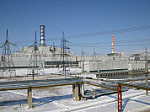
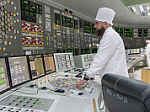
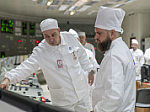
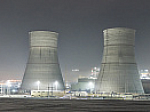
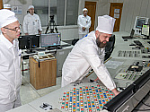
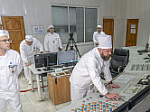


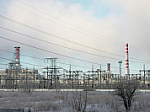
 career
career Innovations
Innovations Projects
Projects INTERNATIONAL BUSINESS
INTERNATIONAL BUSINESS